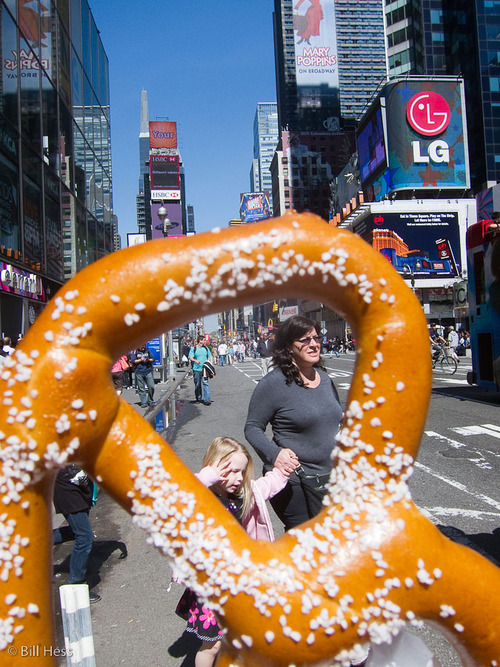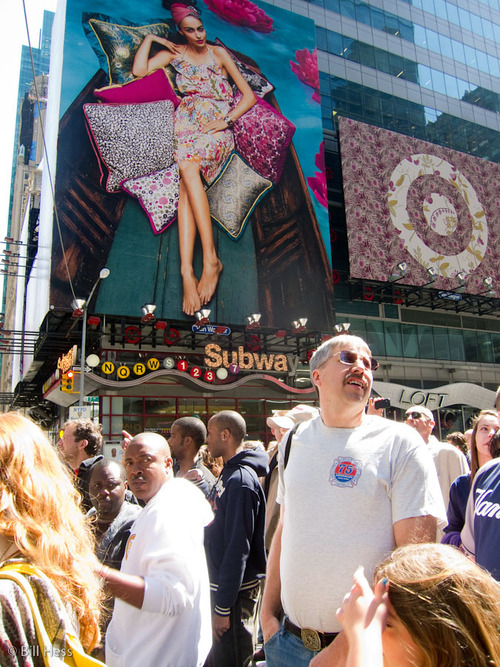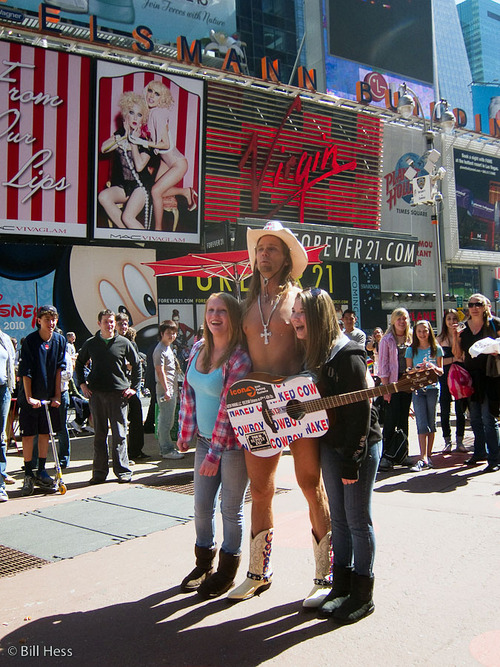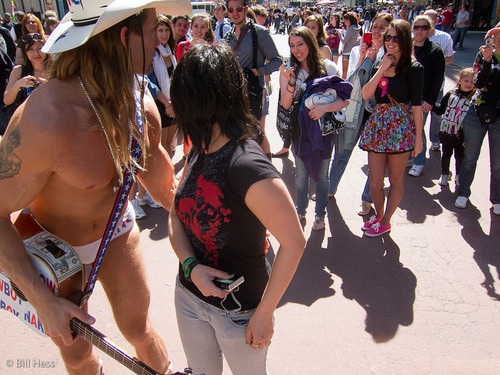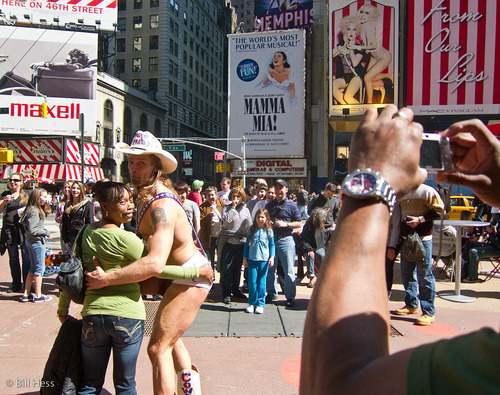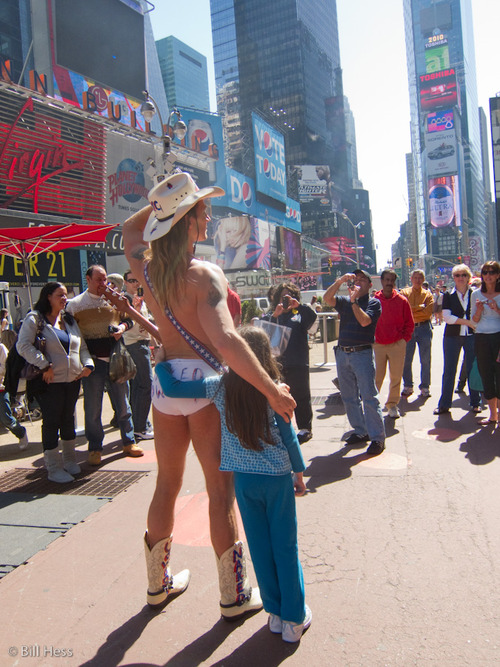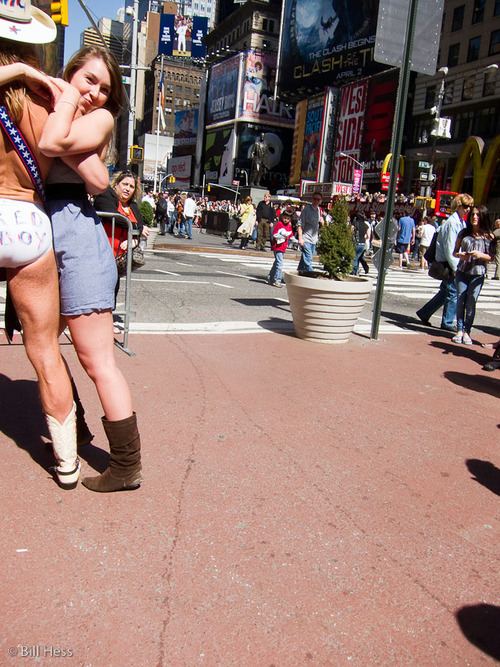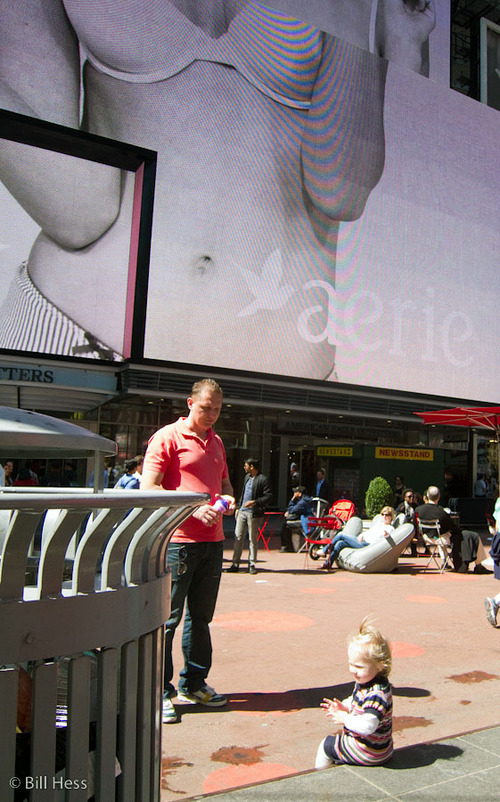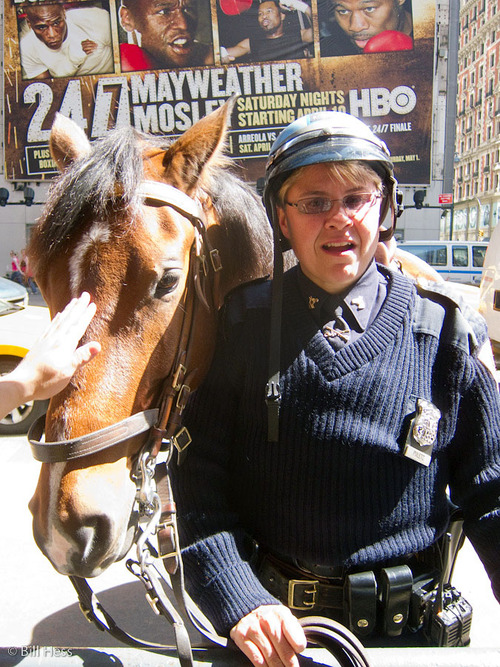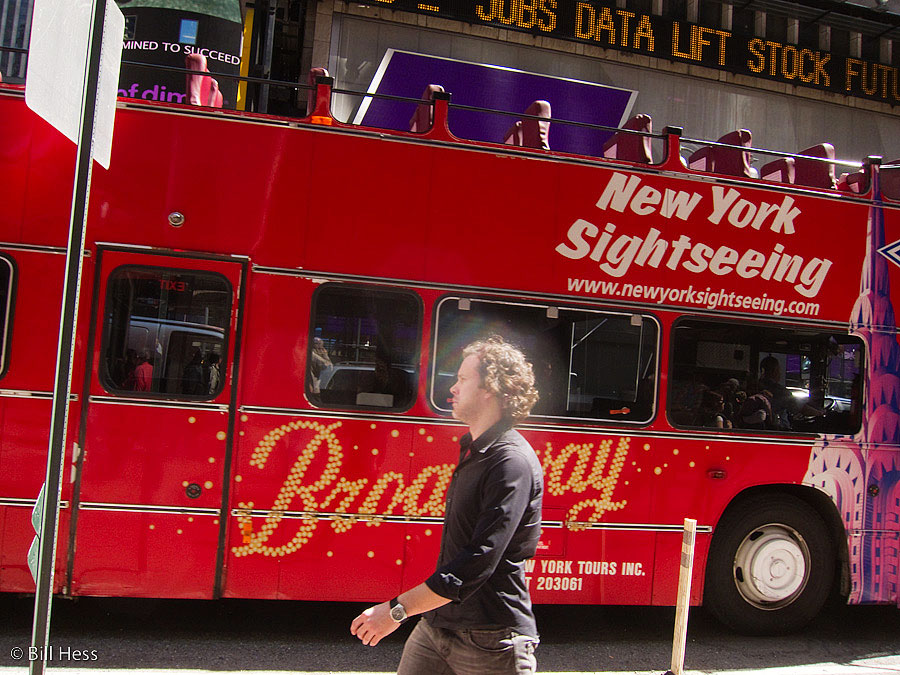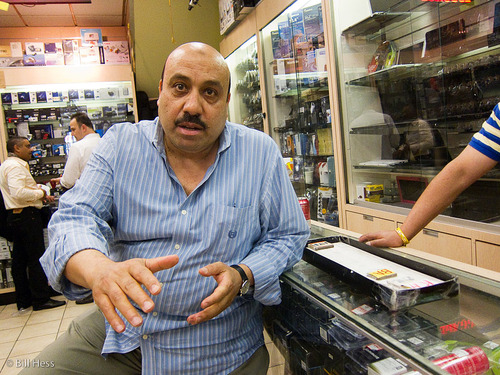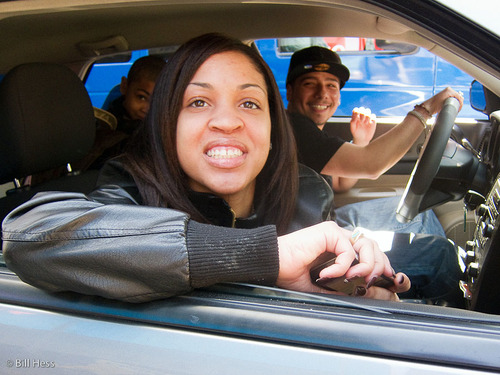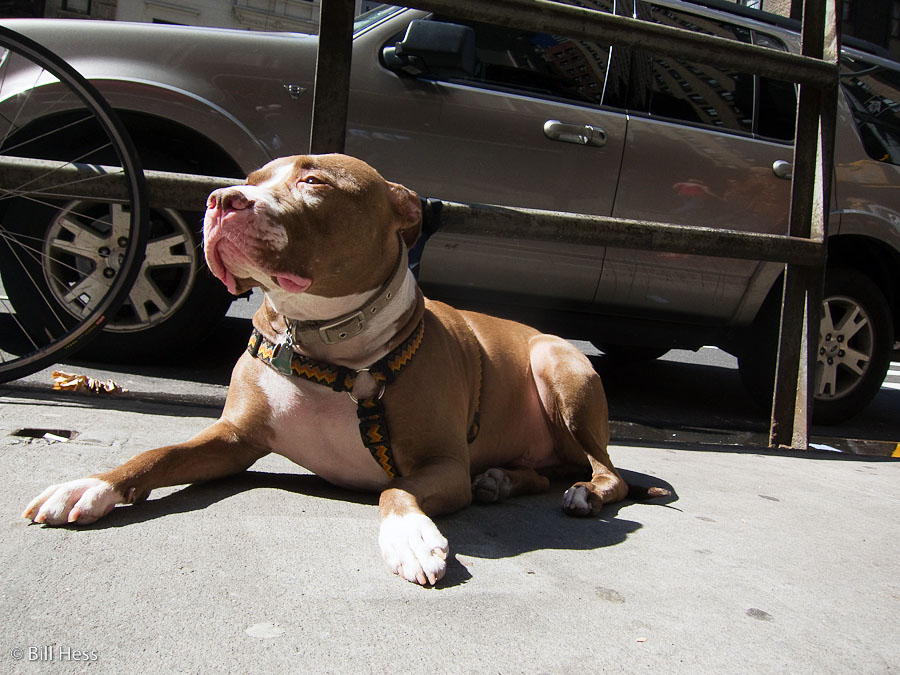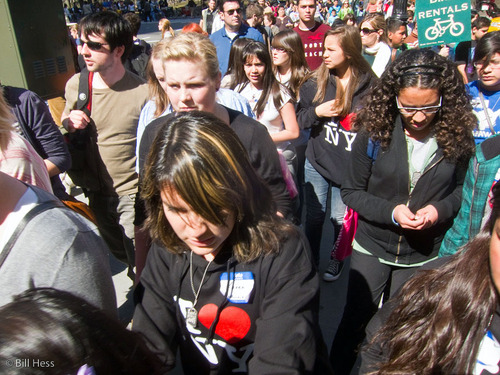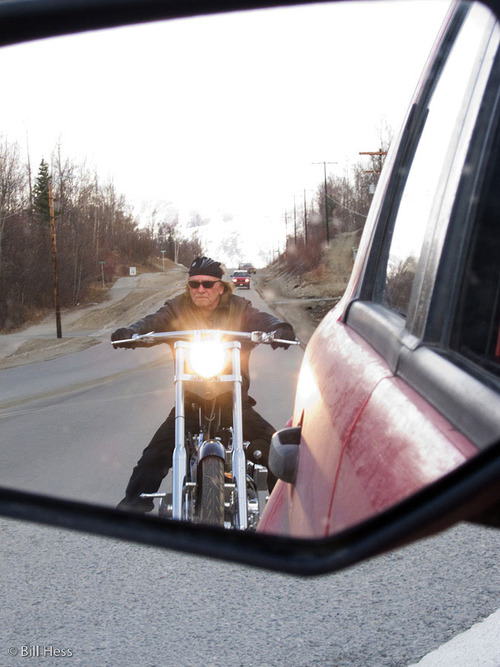Having already done so three painful times, I had planned not to visit the 9/11 site, but I did, anyway
 Friday, April 9, 2010 at 5:59PM
Friday, April 9, 2010 at 5:59PM 
When I went to board the subway train early last Saturday afternoon, I did not realize that I was headed to 9/11's Ground Zero. If I had paid closer attention to the doors of this still-moving train as I photographed it, perhaps I would have known. See how they evoke mental images of the Twin Towers of The World Trade Center, as they once stood?
In the days since the towers came down and with them some 3000 lives, I had visited the site three times, the first less than a year after the attack, when all the spontaneous memorials, packed with American flags, flowers, teddy bears, pictures of the deceased, words written to them and many items too numerous to begin to recount, still stood.
Each time, it was a gut-wrenching experience that brought me to tears and caused great anger and sorrow to well up inside me.
I did not wish to once again subject myself to such feelings this time and so I decided that, as deeply as the place is rooted in my heart and soul, I would skip a repeat of the experience.
I did not have much time. I had promised Chie that I would meet her for our tour of the Cloisters at 3:00 PM and I had not only overslept but had been slow to get going after that.
I thought perhaps I had just enough time to ride to South Ferry, at the very southern tip of Manhattan and then to turn around and ride to the very northern tip to meet Chie.
So I got on a train bound for South Ferry.
People on that train seemed all to be in a good mood.

At one stop, a man entered, clutching dollar bills in one hand and a document of some kind in the other. His legs were slightly twisted, he was bent a bit at the back, walked with a limp, had an unhealthy pallor to his skin and a look of desperation in his eyes.
He began to speak in a high, halting, voice, his words broken and slurred. He said that he had suffered a debilitating stroke, that he had a wife and three children, ages three to ten. He said that the assistance that he received was not enough to make ends meet and to feed his family and get them the medical care that they need.
He said that he hated to beg, but he just couldn't make it on his assistance and may God bless all who were willing to help with a small donation.
I did not know if his story was true, but I could not doubt that his spot in life was a hard one. As the train came to a stop, I reached into my pocket to see how much change I might have on me, but he turned, limped to the door at the far end and stepped out of the train before I could fish it out.
I did not see anyone give him money.

Then the train stopped and went no further, well before we got to South Ferry. Ahead of us, another train had broken down and we could not pass, but we could get off and catch a free shuttle to South Ferry.
So I got off, walked to the stairs that led to the exit and climbed out of the subway darkness into the light.
Immediately, I recognized that I had come up very close to the site of the 9/11 attack.
It seemed that despite my decision to avoid it, fate had determined that I would once again look upon one of the most painful memories of my life. So I decided not to go to South Ferry, but to spend what little time I could here, at the place where my country was dealt such a murderous, senseless, painful, blow.
Between where I stood and the site, I could see an ambulance, a road block, police officers, steam rising, and a young woman reading a book.
So I walked in that direction, past the ambulance and soon came to this scene, so familiar, yet so different now. For as long as I have a memory, the sight of these three buildings, standing tall, rigid, quiet, and firm, rising out of the smoke and ash after the Trade Towers fell, will never leave me.
How slow the process of reconstruction has been. Hopefully, it will move a little faster now that New York City and developer Larry L. Silverstein have reached a tentative agreement that will put a mix of public and private funds into the project.
If I understand correctly, this skeleton structure now going up will become The Freedom Tower, 60 stories tall.

I had it in mind to go back and recount for readers that beautiful morning, both in Wasilla and New York, when Jacob barged into our bedroom and woke Margie and I up with this words, "Mom! They bombed the World Trade Center," but I feel too weary at the moment to do so.
I'm afraid my travels, and all the sleep that I have continued to miss even since my return home, are catching up to me. I did, however, write a bit about that day in the second post that I ever made in this blog.

I did not have time to walk to walk around the entire area of Ground Zero, but I was right by St. Paul's Chapel, the Episcopal Church where George Washington worshipped on the day that he has sworn in as the first President of the United States. After surviving the 9/11 attack, St. Paul's also served as a relief center for rescuers and those who worked to do the initial cleanup.
Many believe that the chapel, which did not lose even a single broken window, was saved by a giant sycamore tree that took the brunt of flying debrie from the northwest corner of the chapel yard.
A root of that tree has been cast in bronze.

As I sat down on a bench beside tombstones of Americans dead now for well over 200 years, a little bird came hopping by.
People passing between the church and Ground Zero. Please take note of the small group that includes three children, walking just to the right of the tree.

They turned into the walkway to the chapel, where the adults stopped to ponder what had happened here.
I wondered about the children and their thoughts and feelings toward the events of 9/11. Had any of them even been born on that day?

I spoke with their parents and learned that the boy and the older girl had both been born in 2001, before the attack. So they were here for the event and the parents say they are very much aware of what happened that day. I did not get to speak to the children directly.
While she agreed to it, the mother of two of the children was a little bit nervous about them appearing on the internet, so I will not identify them by name or town.
These are the graves of two veterans of the Revolutionary War: Major John Lucas and Major Jon Sumner. Both died after the war in New York City of illness. Both were 33.

People pass through the cemetery of St. Paul's chapel. I would have lingered longer, and gone inside the chapel, but right after I took this picture, I checked the time. It was 2:14 PM. I still had to return to the guest house to clean up a bit. I was going to be late to meet Chie.

As I began my walk back to the subway, I spotted this gentleman with his bicycle, looking up at the under-construction Freedom Tower.
I would liked to have talked to him, but I had to move quickly on and so I did.
Soon, I would be back in the subway. Soon after that, I would be off to meet Chie, to take the tour of Cloisters.
Chie, Cloisters, the Dutch purchase of Manhattan and Bunny Rabbit soup will be the subject of my next post. I had planned to put that post up Saturday, but due to a bad malfunction by Squarespace, my problem-plagued, quirky bloghost, I did not succeed in getting this post up until Friday evening. I want to leave it up for a full 24 hours and so will probably just go ahead and hold the Chie/Cloisters post until Sunday morning.
Yesterday, I did pay a little visit to Kalib and Jobe - so, maybe, I might put those two up late Saturday evening and then get back on schedule Sunday morning.
We will see.

































